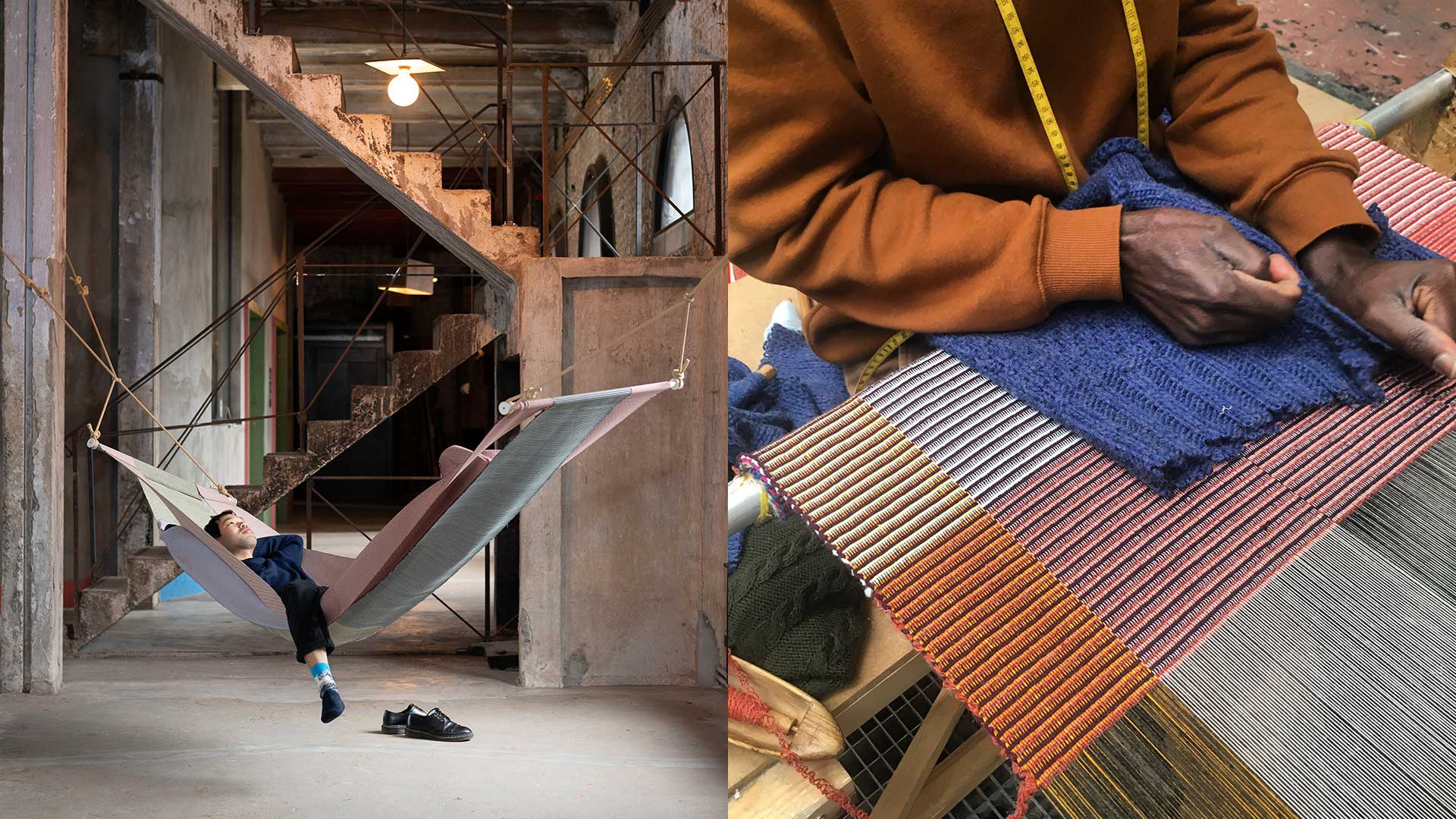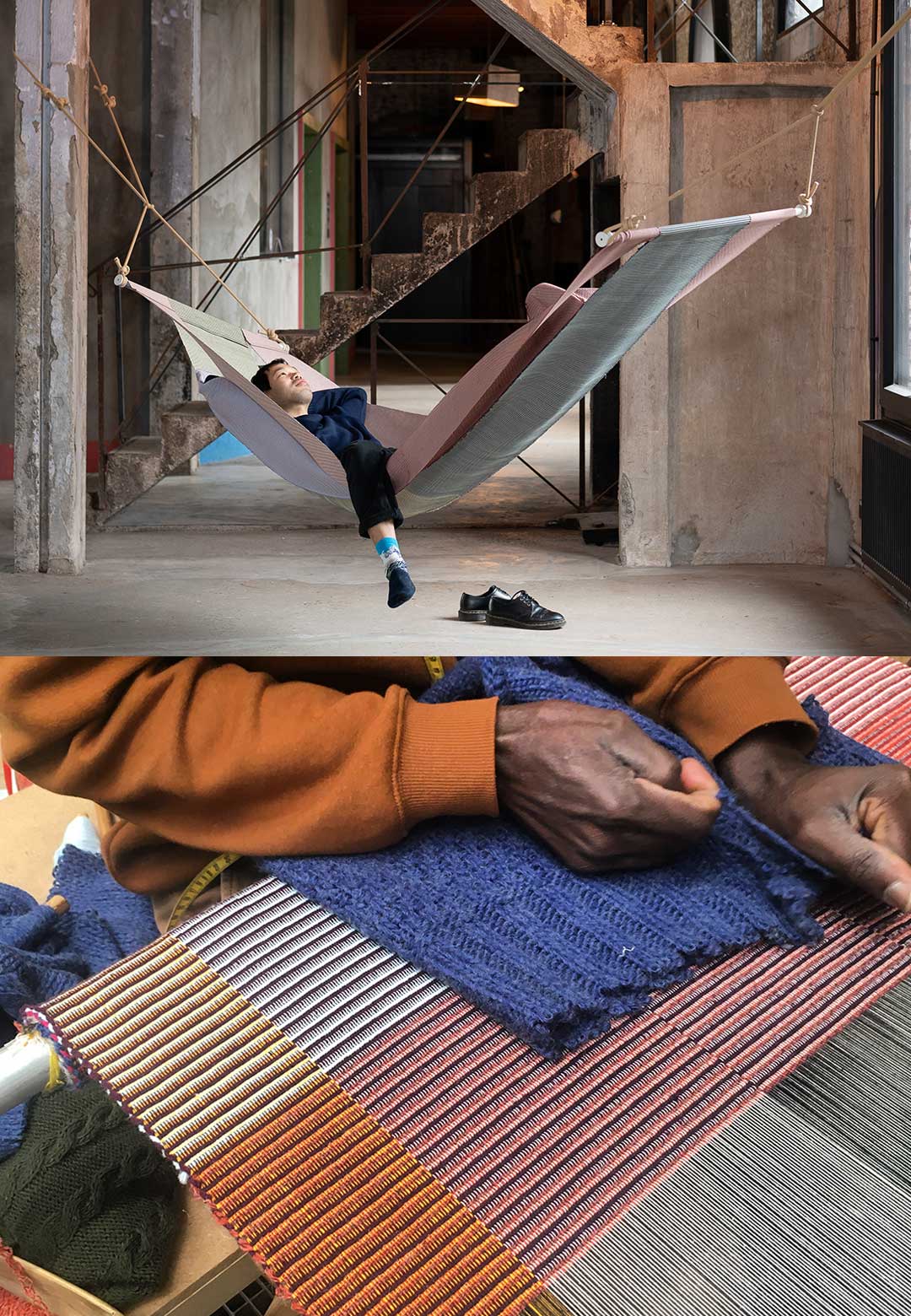Brussels-based textile research and production studio Ahokpe + Chatelin gets its name from the founder Georges Ahokpe and Estelle Chatelin. The dynamic duo comprises a textile designer and a weaver, carrying the purpose of initiating a thought-provoking discourse between Benin and Belgium while questioning conventional practices of weaving for domestic purposes. They do so by reiterating the interconnection between producers, tools, and users, with skilful textile craftsmanship.
Ahokpe + Chatelin respond to design queries by amalgamating their distinct knowledge, cultural backgrounds, and learned perspectives. Each object they create is conceived through collaboration across the two countries, weaving a narrative that celebrates the unique attributes of both territories and paying homage to both cultures. Their experimental process of co-creation gives birth to imaginative objects that awaken the senses, as an invitation to explore the diverse and tangible realities surrounding us. The duo explained the objective of the studio saying, "When designing our objects, it is imperative for us to take into account what is happening in both, Belgium and Benin. This can have as much to do with uses as with materials or even the way in which they are produced. Our aim is to combine these realities to create new objects." Each of their objects undergoes a meticulous thought process, where they carefully consider the entire journey, from its sources of inspiration to its ultimate destination—one striking example of this in action is their 'Ku do azò' hammock.
This modest yet extraordinary creation was intended for sale in Western markets but was diligently crafted in Benin using recycled yarn from unravelled jumpers that usually end up in different parts of Africa. Conversely, for the outdoor version of their hammock design, they acquired polypropylene yarns from a company specialising in end-of-stock materials gathered from carpet and flooring manufacturers in the Kortrijk region of Belgium. "In the case of the 'Ku do azò' hammock that we presented in Milan, it originated in Benin—well, let's just say that the weavers weave hammocks for foreign tourists, and not so much to use themselves. Based on this, we questioned this export object in order to develop a new one. We thought about how we could link the raw material and the object's destination and chose to work with yarn from sweaters arriving from the West, with the aim of giving them added value while returning to the West. As in Belgium, we spend most of our time indoors, so we developed this product for that specific purpose, " the product designers explain their approach.
The design of the hammock draws inspiration from the loom itself, utilising its form to explore the potential of the tool. In the Beninese weaving tradition, the loom is employed to create fabric strips that correspond to the weaver's body, limited in width to the span of their shoulders. They shaped the object to mirror these fabric strips, ensuring that it could accommodate the user's body. The product design was inspired by the desire for comfort and exoticism, as well as a reflection on the impacts of consumption, and in the process, doing justice to both, ergonomics and responsible material sourcing as an ode to sustainability. Each hammock piece is distinct, boasting unique colour combinations, as witnesses to the two nations' weaving heritage, a woven piece of history.
(Text by Aatmi Chitalia, Intern at STIR)






 Sign in with email
Sign in with email










What do you think?